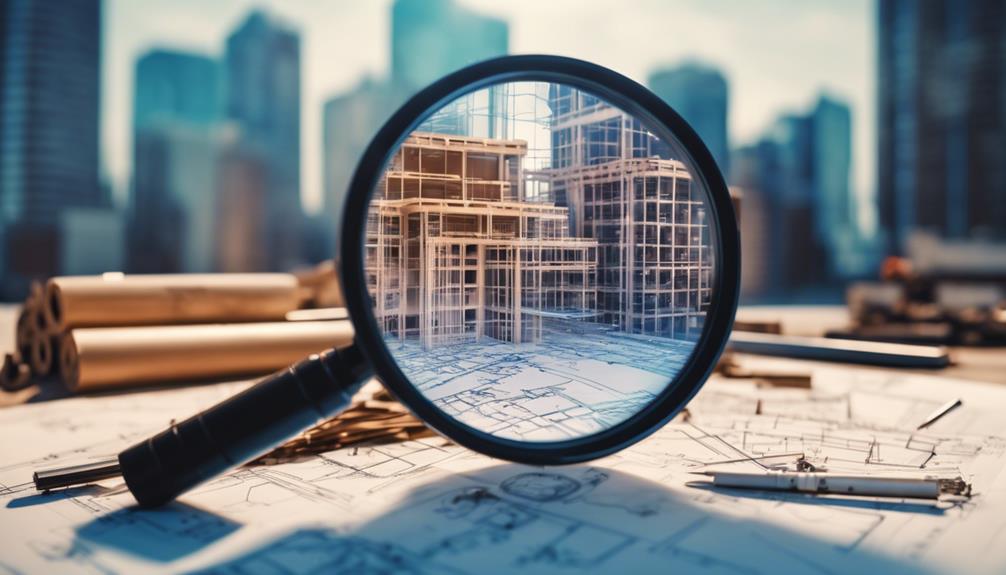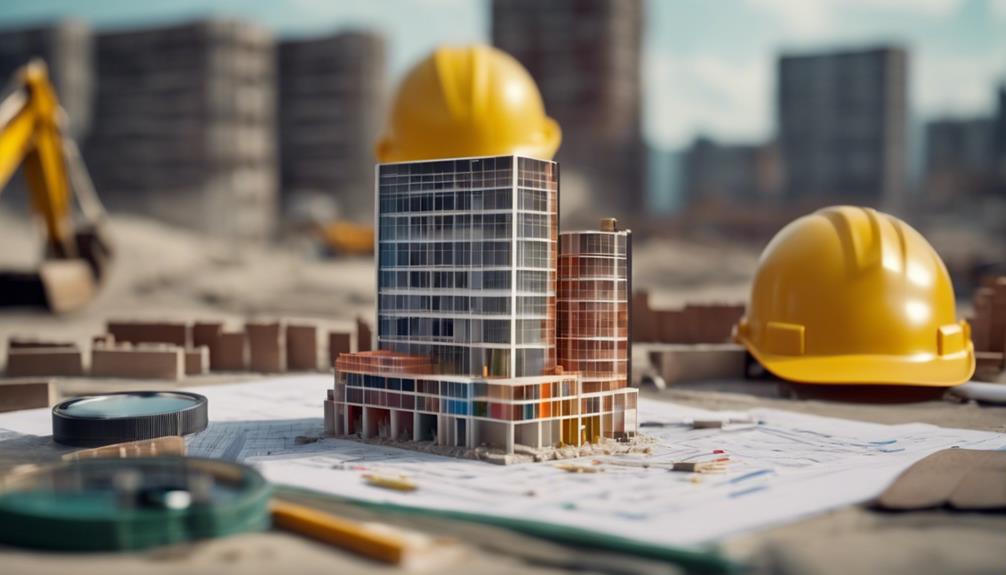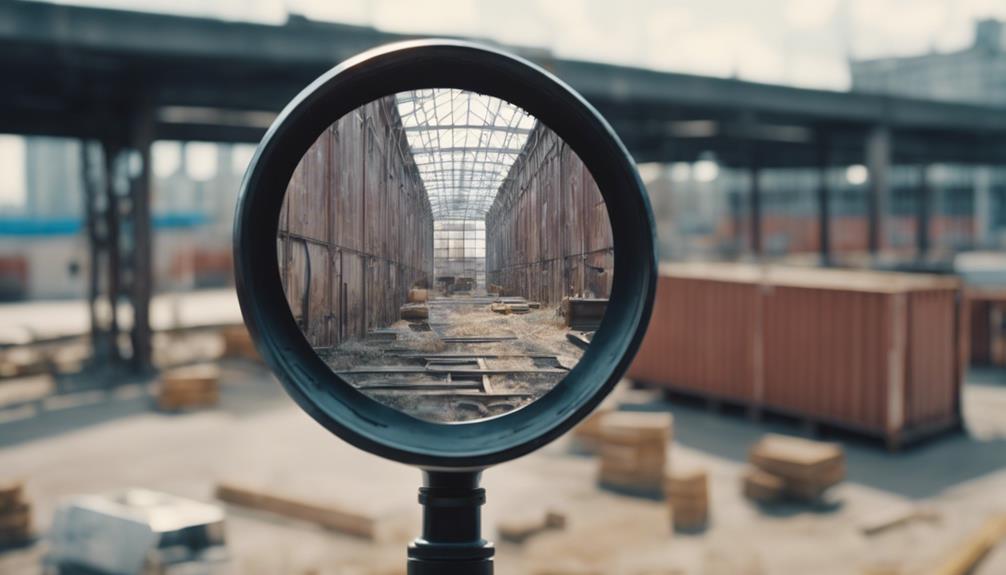Standards are super important for the quality of building materials. They help you pick top-notch, safe materials that make your building strong and long-lasting. But it's not just about how long the building will last. Standards help make construction safer, lowering the chance of accidents.
They also help make the construction industry more responsible. When you follow standards, people trust you more and see you as a professional. Plus, standards make construction more efficient, cutting down on waste and saving time.
So, why would you ignore standards? They have so many benefits!
Key Takeaways
- Standards are like rules that make sure the materials used in building are strong and long-lasting, which means safer buildings that last longer.
- When these rules or standards are followed, we can be sure that the materials can withstand different conditions.
- These standards also encourage new and improved ways to make these materials.
- They help us test materials to check their strength and safety before we use them in any construction.
- Also, when materials follow the same standards, it makes the job of planning and building easier, more efficient, and with fewer mistakes.
Understanding Building Material Standards
Building material standards are like the rulebook for a game. They tell us what's allowed and what's not when we're making something, like a house. It's like a chef following a recipe to make sure the cake comes out just right.
These standards aren't just some advice or tips; they're like the tests a student has to pass at school. Suppose you're building a house. You'd want to make sure that all the stuff you're using to build it's top-notch and safe, right? That's where these standards come into play!
But it's not just about following rules. It's also about learning and making smart choices. When you stick to these standards, you're not just taking a wild guess and hoping you've picked the right stuff for your project. You're making a smart choice based on facts and figures.
What's more, these standards push for new ideas and better ways to make building materials. They motivate everyone in the business to aim for better, safer, and quicker ways to get the job done. When you stick to the rules, you're helping the industry to grow and get better.
Role of Standards in Construction Safety
In the world of construction safety, standards are really important. They do more than just make sure the materials we use in building are good. They also keep people who work with these materials safe. Think about it – these standards aren't just written rules. They can mean the difference between someone getting seriously hurt or staying safe on a construction site.
Standards are a great tool for reducing the chance of someone getting injured or worse. They help guard against dangers like falling, electrical accidents, and buildings falling apart. When you follow safety rules, you're not just obeying the law. You're making your project run more smoothly and reducing the chance of delays caused by accidents.
Here's the key point: putting safety standards into action isn't just about checking off boxes. It's about creating an environment where everyone thinks about safety and takes responsibility for it. When you prioritize safety in construction, you're not just protecting your team. You're showing the rest of the industry how to be safe. This goes beyond just materials and standards. It's about creating a safer and more responsible future for everyone in construction.
Importance of Quality Assessment

Quality assessment in construction is crucial, akin to ensuring the freshness of cake ingredients before baking. The materials used in construction must be robust and secure to guarantee the safety and strength of the structures.
This process can be likened to constructing a Lego tower, where the stability of each block is essential. Testing building materials is vital to ensure they can withstand external factors such as wind, rain, and wear and tear.
Just like testing the strength of a chair before sitting on it, construction materials undergo rigorous testing to verify their durability. Quality assessment in construction serves as a beacon, guiding the industry towards the creation of safe and durable structures for the community and future generations. Working collaboratively, we can construct a safer and more resilient future.
Impact of Standards on Construction Durability
Think about how your construction project will hold up over many years. Following rules for building materials isn't just about checking off tasks, it's about making sure your building stays strong for a long time.
This means fewer damages and less expensive fixes in the future. Remember, these rules aren't just things you have to do, they're important tools to help make your building last longer and be more eco-friendly.
Enhancing Structure Lifespan
Standards are super important when it comes to making buildings last longer. Think of them as a special toolkit that helps ensure we use strong, long-lasting materials. These standards help make sure our building designs are solid and won't easily break down. They look at things like how strong a material is, how well it can withstand different kinds of weather, and how much it can handle wear and tear.
Standards aren't just rules to slow us down – they're like a hidden secret that helps our buildings live longer. By following these standards, we're making a smart choice to create a building that can handle whatever nature throws at it and stay sturdy for a long time. It's our job to stick to these standards, so we can create buildings that really stand the test of time.
Standards Role in Sustainability
Standards are like the rule book for building in a way that's good for our planet. They teach us how to use materials that don't harm our environment. Following these rules means picking tough materials that help save energy and last a long time.
Standards also show us how to build in a way that's good for the earth and makes the buildings last longer. Imagine if every building you walk into was helping to make our future better. That's what these standards can do.
Minimizing Risks With Building Codes

Building codes are super important! Think of them like a superhero that shields you from disasters. These codes help keep everyone safe and prevent possible legal problems.
It's essential to learn about them, respect them, and follow them. They're there for your protection, for your property's safety, and for everyone's well-being.
Understanding Building Code Importance
Building codes might seem like a big hassle, but they're actually super important for keeping us safe. Think of them as a kind of safety net for construction work. They lay down the basic rules that all buildings need to follow, to stop things going wrong and causing accidents or damage. So, if you skip over them, it's like playing a risky game with safety.
But they're not just about stopping danger, they're also like a cheat sheet for getting building permits. They help you stay within the law in this tough industry. Rather than seeing them as hurdles, think of them as helpful friends that change and adapt with new problems and tech. They're not against you—they're the foundation of good building work, helping you fit in with the other builders. If you use them properly, you're choosing safety, quality, and lasting work.
Building Codes and Safety
Building a house or an office is more than just putting up walls and roofs. It's about creating a safe place for people to stay and work. That's the reason we've building codes. These are rules that make sure your building is safe and strong, protecting people from dangers.
Building codes talk about important things like preventing fires, making sure the building is strong enough, and keeping the people inside healthy and safe. You have to follow these rules to get permission to build and to let people use the building after it's done.
Now, these building codes aren't old and boring. They change and get better over time. They help us face new challenges in building safe and strong buildings. So, it's important to know, follow, and use these codes. After all, we want our building to be the best and safest it can be!
Compliance With Construction Standards
In the construction world, following the building rules isn't about checking off tasks. It's about keeping things safe and strong. Without these rules, building could be risky, right? Poor materials could cause accidents or make buildings fall apart.
The rules are there to make sure everything is good quality and to keep everyone out of legal trouble. Your choice to follow these rules helps everyone by creating safer places. So, really get into these codes. They're not just rules, they're like a protective shield in the ever-changing world of construction.
Standards and Trust in Construction Industry

Trust in the construction industry is like a building. It needs a strong base to stay up. This strong base comes from following rules. These rules make sure that all building materials are of good quality and perform well. When you follow these rules, you make sure that your building is strong and safe. This also helps you earn trust from your clients and partners.
These rules cover many things, like what material to use and how to keep safe while building.
These standards also help everyone in the construction industry to be responsible and professional. They aren't just suggestions; they're the key to being trustworthy and dependable in your work. If you don't follow these rules, your project may not be safe. Also, people mightn't trust you in the future.
Standardization Benefits in Construction
Standards are really important in construction, folks. They make sure everything is of top quality and will last a long time. They also make sure your building projects are strong and sturdy.
Have you heard about Modular Construction? It's a great example of how standards are used. It's like building with giant Lego blocks that are all the same size and shape. This means less waste, quicker building, and it's better for the environment. Sounds great, right?
But you can't just say you're going to use standards, you have to really mean it. It's like making a promise to do your best. It means following strict rules, testing everything to make sure it's good, and doing what the industry says is best. It's about being honest, taking responsibility, and being reliable. It's how we build trust, just like we build buildings.
Ensuring Integrity Through Material Testing

Just like we follow rules when building things, it's equally important to test the stuff we use to build with. This is because it helps us make sure that the things we build are strong and safe. Think about it this way: how can we say we're making amazing structures if we don't know if the stuff we're using to build them is good enough? Looks can be deceiving; it's the actual strength of the materials that really counts.
Testing materials is more than just for peace of mind; it's a safety net. These tests help us understand how strong, resistant, and durable the stuff we use is. This is like a road map, helping us make sure everything is of good quality.
Imagine tests like sound waves and heat pictures that help us understand the quality of stuff without breaking it. These tests can give us the confidence that we're using the right materials. We can't be lax about this. We need to stay focused and make sure we're following the testing rules properly.
Planning and Efficiency in Standardized Construction
So, let's chat about something cool called standardized construction materials. You're probably thinking, 'What's that?' Well, they're special building items that are all the same. They're like the Lego blocks you use to build your dream castle or spaceship.
These 'Legos' are for grown-ups, and they're super helpful when building real-life stuff. They make making plans a whole lot easier. Imagine you're planning a birthday party. If you knew exactly how many balloons, cupcakes, and party hats you needed, wouldn't that make things simpler? That's what these materials do for builders.
Plus, these 'Legos' are all the same, so there's less chance of something going wrong. It's like using a recipe to bake a cake. If you have the exact amounts, your cake will turn out perfect every time.
And guess what else? These materials make talking about the project easier too. It's like having a secret language everyone on the team understands. So, no one gets confused about what they need to do.
In the end, using these materials isn't just about making buildings. It's about creating a place where people feel like they belong, like a real-life Lego community. So, standardized construction materials don't just help builders – they change the game completely!
Conclusion
Standards for building materials are super important.
Why? They make sure that our buildings are safe and will last a long time. If we don't follow these standards, we could end up with problems.
But, if we test our materials and follow building rules, we can avoid danger and make the industry more dependable.
So, let's say a big yes to building standards. They help us create safer and stronger buildings.


